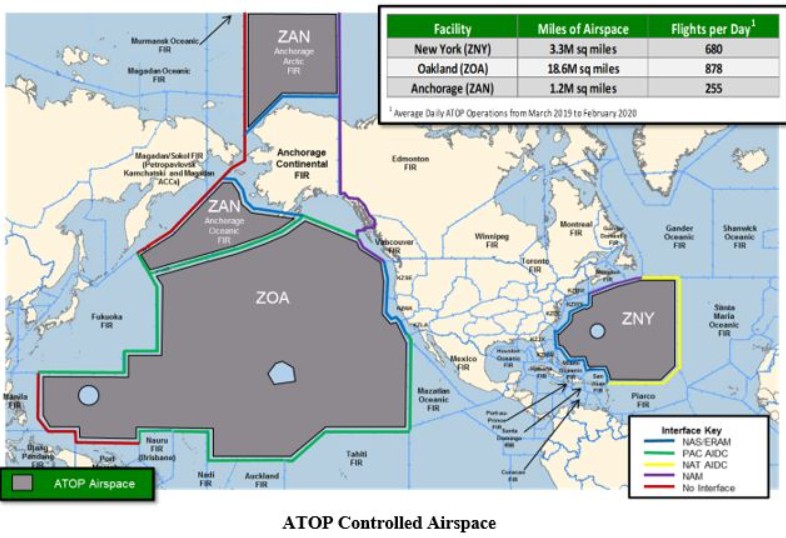Multiple flights from US West Coast airports heading across the Pacific Ocean were subjected to delays and disruption following an IT outage at the Oakland Oceanic Air Traffic Control Center (ARTCC) located in Oakland near San Francisco on February 22, 2025. The hour-long outage saw some flights enter holding patterns while others were held on the ground until the problem could be fixed.
Flights departing from several airports on the US West Coast, including San Francisco Airport (SFO), Los Angeles International Airport (LAX), and Seattle–Tacoma International Airport (SEA), were affected by the IT failure. Airlines affected ed included United Airlines, Delta Air Lines, as well as several Hawaiian Airlines flights.
According to a report published by the San Francisco Chronicle, one United flight heading to Lihue in Hawaii operated by a Boeing 737 MAX 8 had reached its initial cruising altitude of 30,000ft (10,500m) over the Pacific Ocean before being asked to enter a holding pattern by air traffic controllers. Having completed three circuits of the holding pattern, the aircraft subsequently returned to San Francisco Airport, landing some two hours and ten minutes after it had departed the Californian airport.
The Federal Aviation Administration (FAA) reported that the flight disruption was caused by the failure of an IT system known as the Advanced Technologies & Oceanic Procedures (ATOP) Ocean21 system. The San Francisco Chronicle stated that the system was first rolled out in 2004 and was produced by Lockheed Martin.
According to the FAA, this system replaced the previous FAA oceanic air traffic control system (known as ODAPS) and among other improvements, “updated procedures, and modernized the oceanic automation systems located at Oakland (ZOA), New York (ZNY), and Anchorage (ZAN) Air Route Traffic Control Centers (ARTCCs).”
The FAA adds that the ATOP system is responsible for:
fully integrating the flight and radar data processing
detecting conflicts between aircraft.
providing satellite data link communication and surveillance capabilities
removing the need for paper flight strips.
automating various manual processes, and
allowing airlines to take advantage of investments made in cockpit digital communications.
The United States is the designated Air Navigation Service Provider (ANSP) for a significant portion of the international airspace over the Pacific Ocean, as the diagram below indicates, and the Oakland ARTCC plays a major role in controlling the airspace across the Pacific region.
However, despite its crucial role in providing such services, the Oakland ARTCC has not enjoyed a blemish-free record when it comes to issues that have caused air traffic control issues and flight disruption in recent years. Recent data from the FAA suggests that air traffic controllers in San Francisco, Oakland, and San Jose are facing immense strain as long duty hours, insufficient break periods¸ lack of staff, and employee morale were all contributing to safety concerns at the center and causing delays to flights.
This data highlights a wider issue affecting air traffic control services across the US, particularly in light of the recent accident involving an American Eagle CRJ900 and a US Army Black Hawk helicopter in Washington DC, where one of the air traffic controllers reportedly on duty in the tower at Washington National Airport (DCA) was handling two jobs at the time of the midair collision due to staff shortages. This, along with the other events leading up to the accident itself, are still under scrutiny by the National Transport Safety Bureau with its interim report due to be published in the coming weeks.




